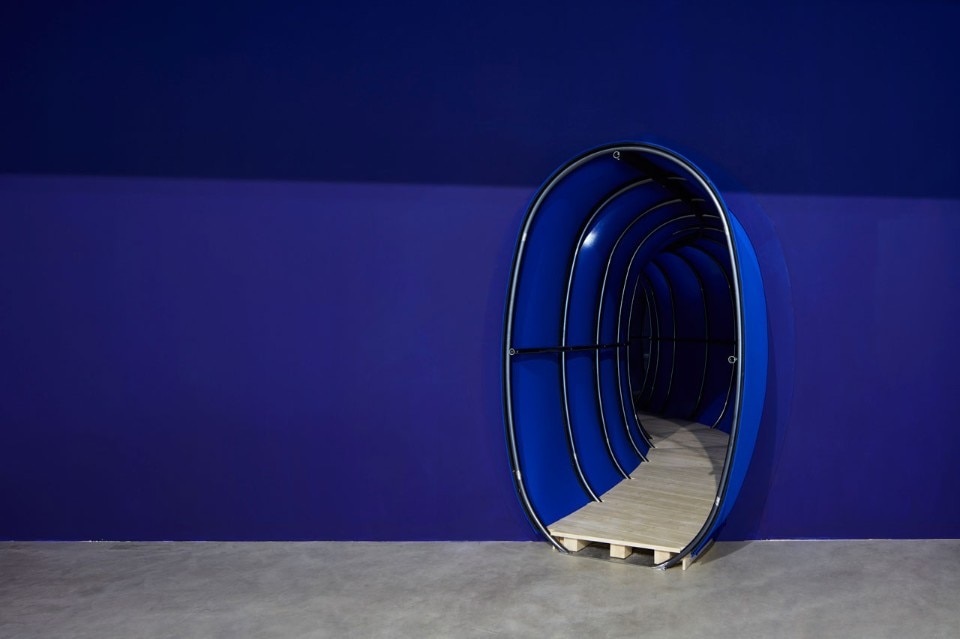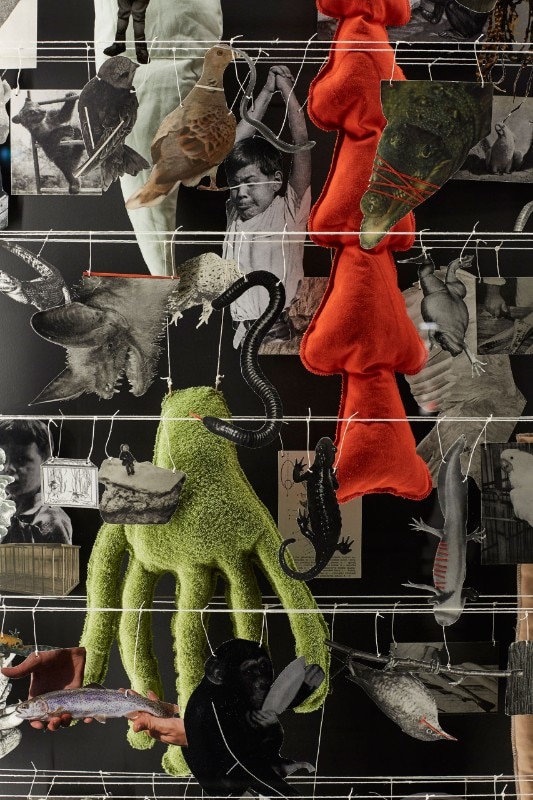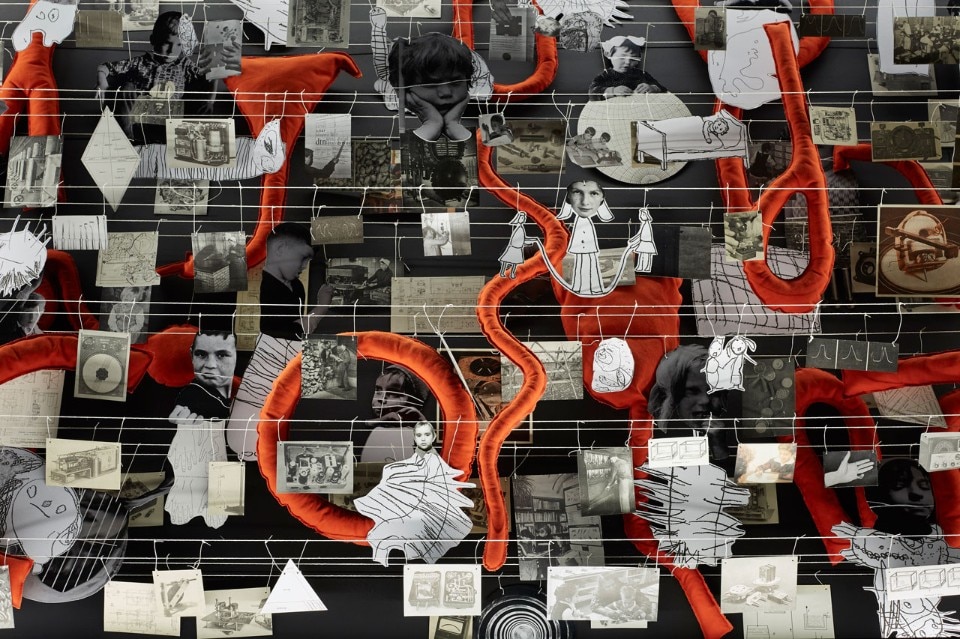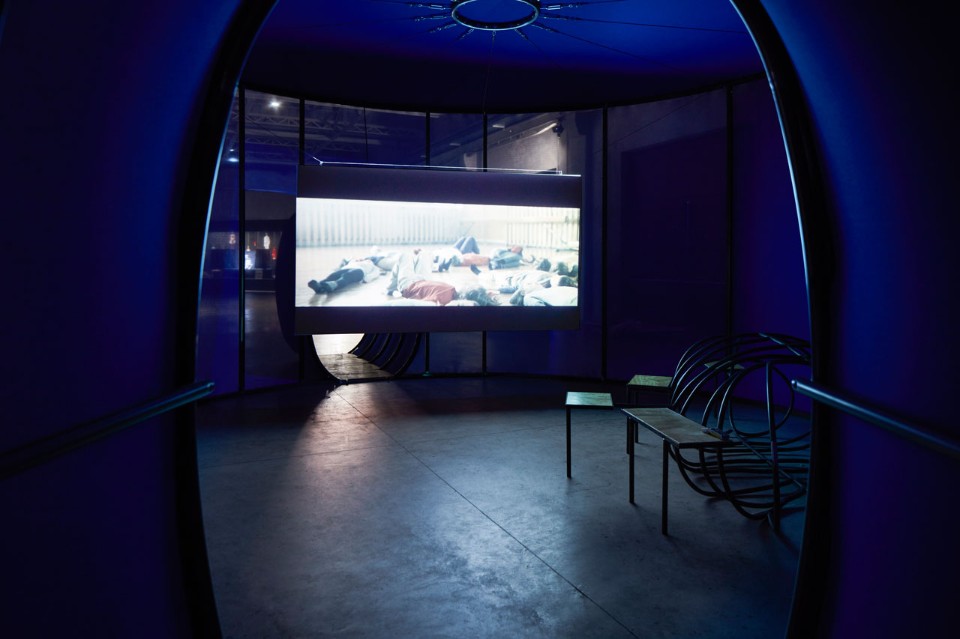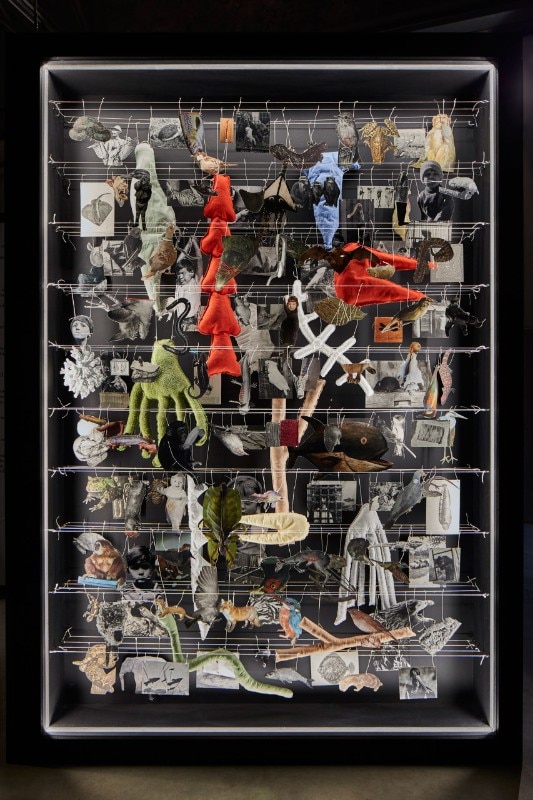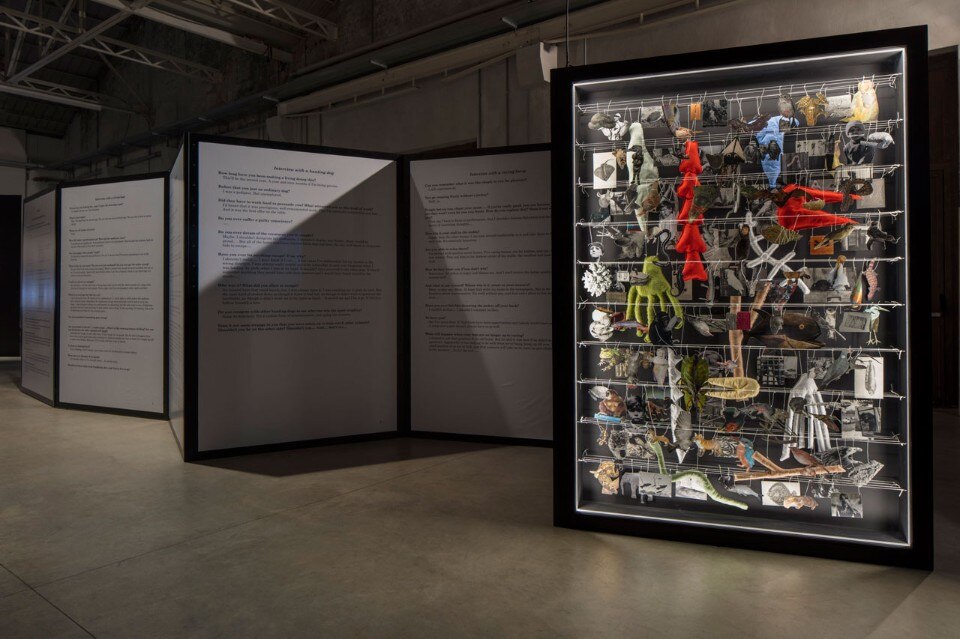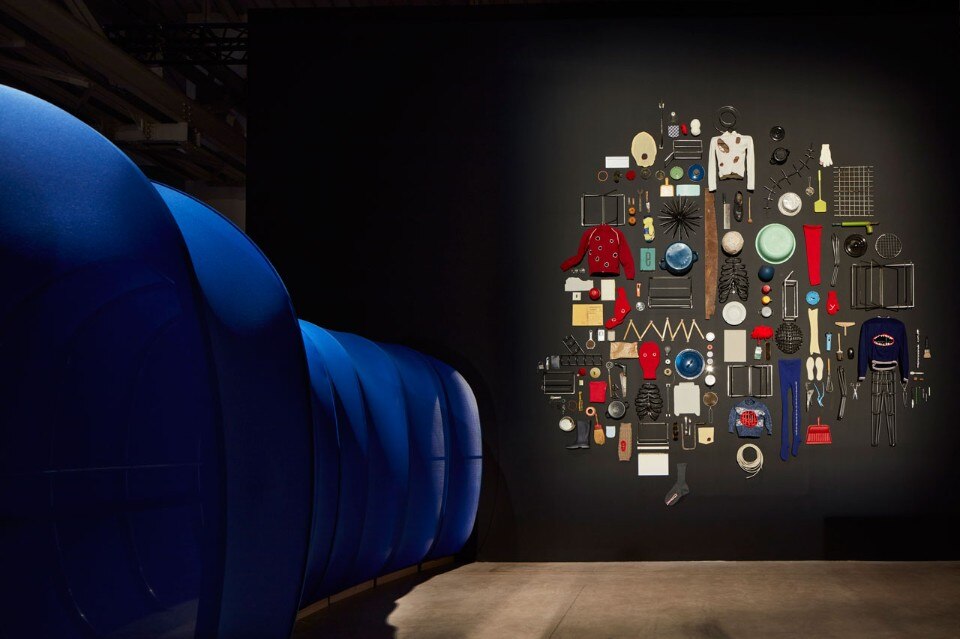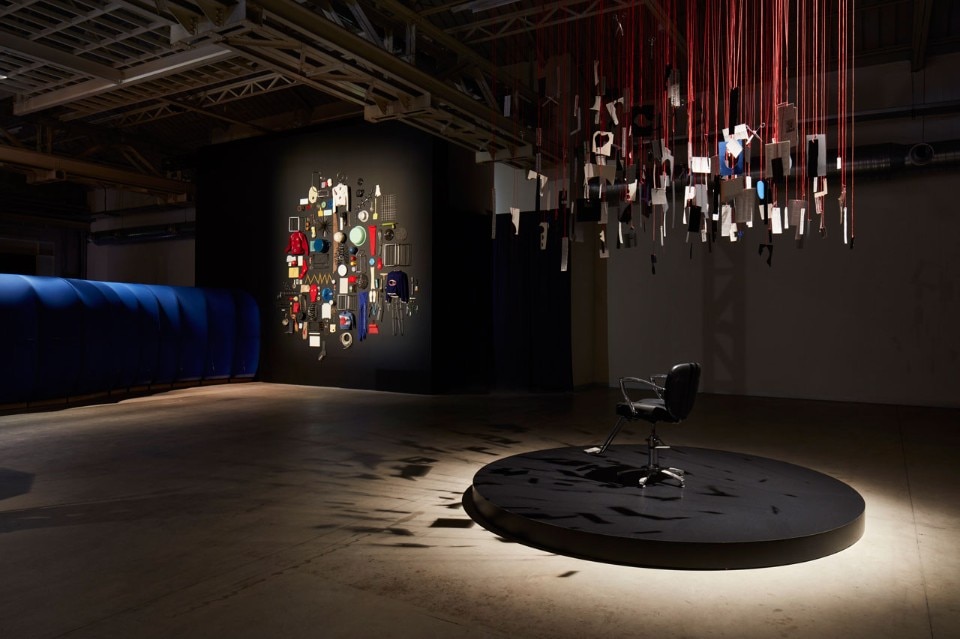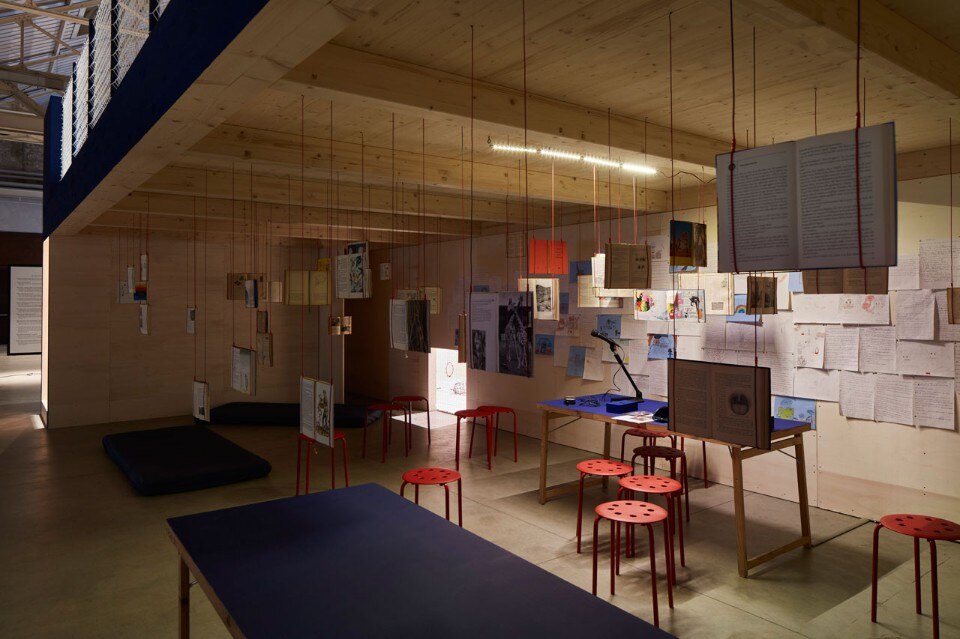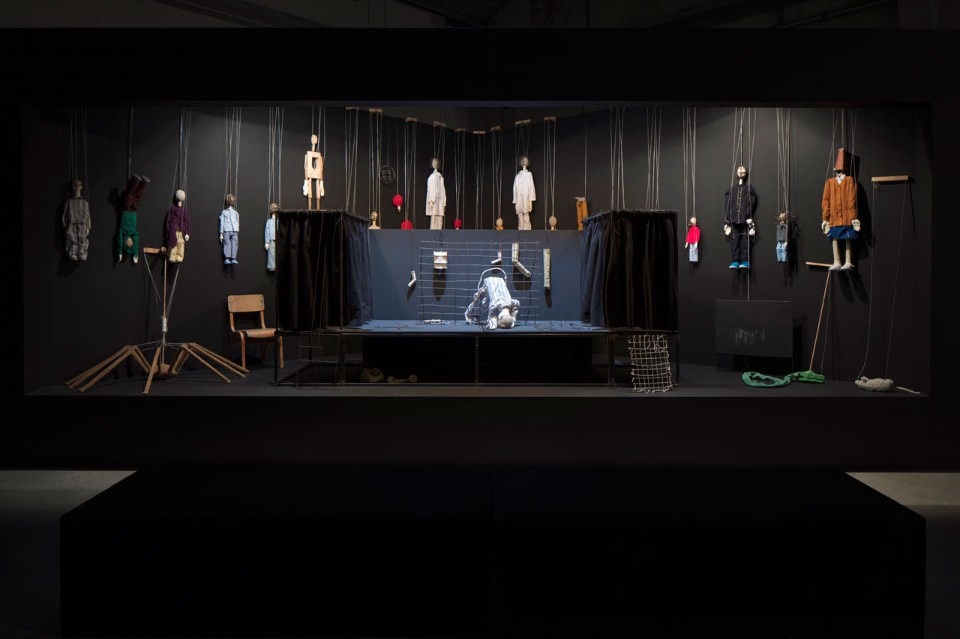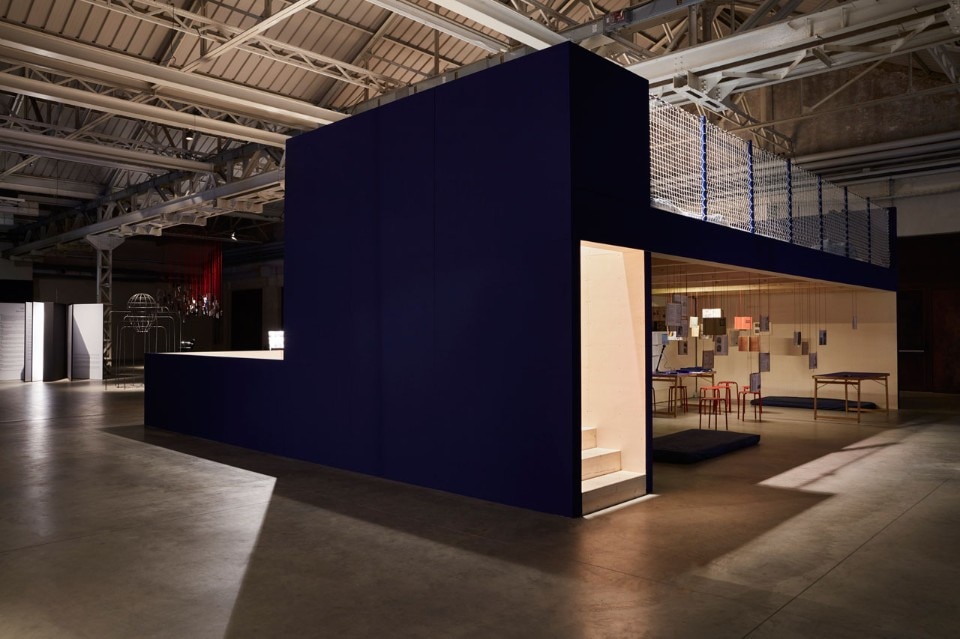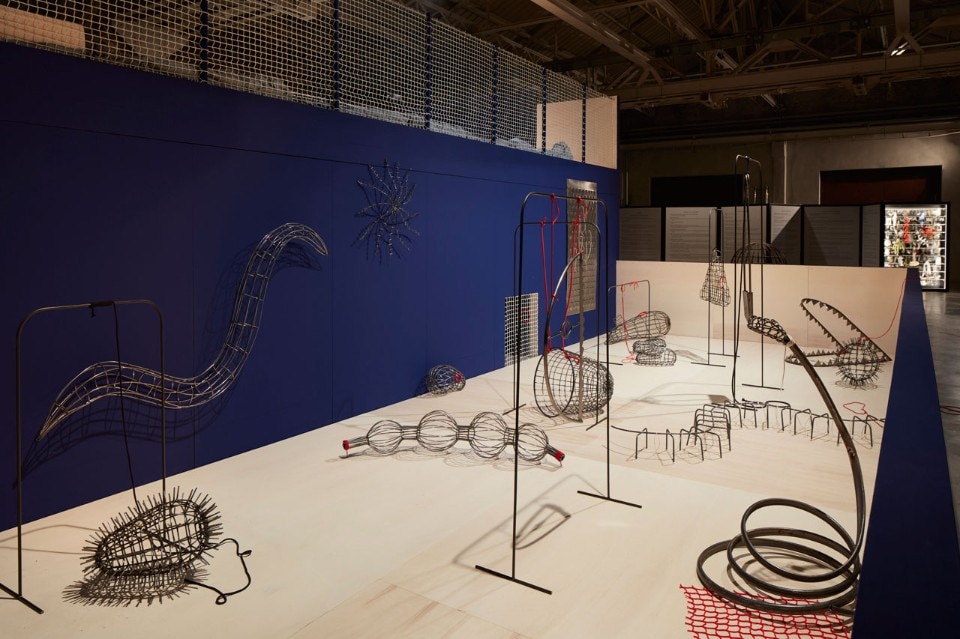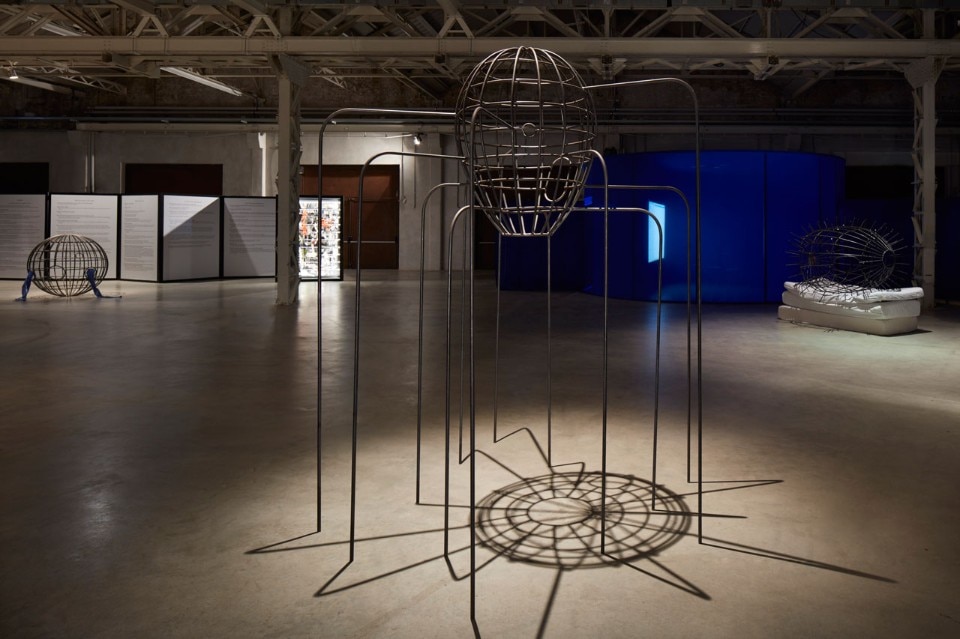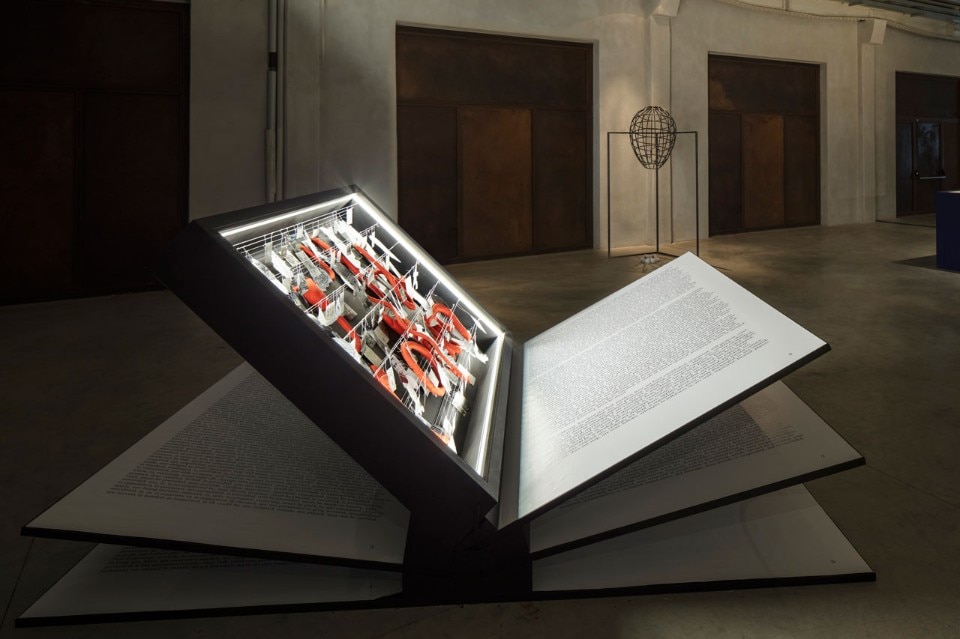“When I enter a closed space - whether it be a church, a shopping centre or a simple apartment - I am emotionally moved by its aesthetics (in the broad sense of the term), by an atmosphere, however imprecise and diffused it may be, before [...] I even begin to distinctly perceive its contents”, wrote the philosopher Tonino Griffero, on discussing aesthetics. This is exactly the sensation one experiences on exiting from the tunnel that leads visitors into the exhibition by Eva Kot’átková, curated by Roberta Tenconi at the HangarBicocca in Milan
Crossing the threshold between inside and outside is not a traumatic experience here: we are invited to travel the blue tunnel-oesophagus, linger in the stomach as the spectators of an initial video work (in which a group of children go through a series of exercises which are already tinged by a hint of disquiet), to then re-enter the tunnel-intestine and exit into the over-crowded world staged by the artist.
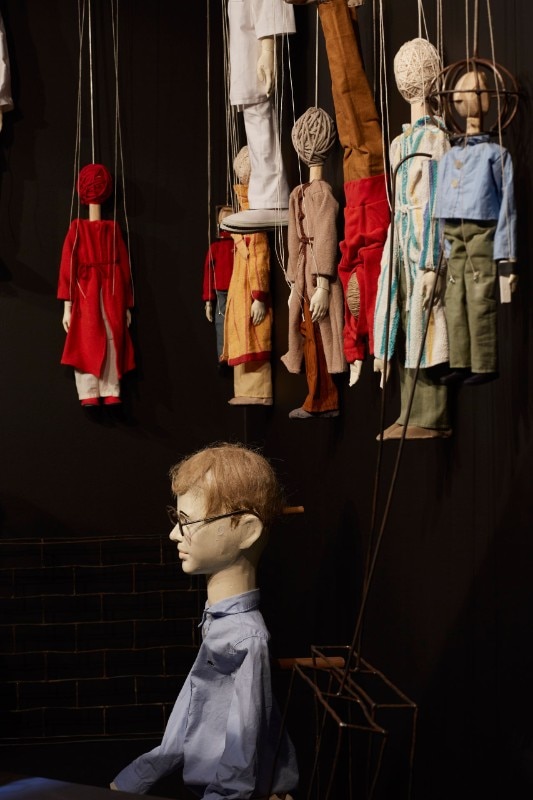
During this initiatory journey, we leave the images of outside behind, and we ready ourselves to receive that which lies within. Once out of the tunnel, after getting over a brief moment of disorientation – possibly also caused by a set-up which doesn’t appear to indicate which way to go – what we perceive is this “semi-thing” which is the atmosphere lying between us and the works, and which, as Griffero explains, is emanated by an initially undefined blend of environment and objects. What pervades this exhibition is a sombre atmosphere in which the sensation of anxiety is confirmed and amplified every time we focus on an individual work, coming closer and discovering, for example, that the figures of children which have been cut out and placed in Diaries (oversized books filled with a jumble of cut out images) almost always have their eyes or mouths sewn shut. In Diary no. 1 (I-Animal) we find imaginary interviews between the artist and animals forced to live against their nature, according to human dictates.
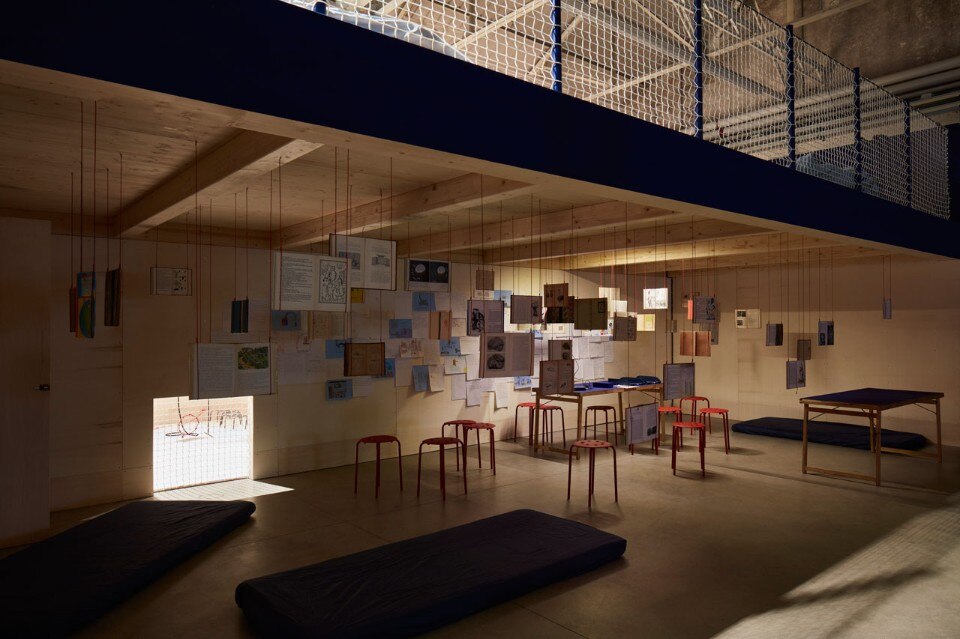
The doubt that the constriction consequently also extends to human beings, spreading through social, institutional and pedagogical organisations, begins to slowly seep in from the very beginning, to then become a certainty, continuously confirmed, for example, by Diary no. 2 (I-Machine) which brings together a series of unusual verbs, echoed by an institutional vocabulary or by the bizarre, and in their own way elegant, cage/heads spread throughout the room (these works are known as “Head” and refer to concepts such as hysteria, hallucination, insomnia, schizophrenia etc.) and from which we can escape as we wish because they are all open.
Once over the initial impact with the overall atmosphere and the emotive impression, a historical-artistic examination also reveals that this enlarged representation of ourselves and the Western system of self-control has, both from a formal and from a conceptual point of view, clear ties with the historical avant-garde movements of the early-twentieth century, such as Dadaism and Surrealism. A representation which in turn, just like in a series of Chinese nested boxes, contains a puppet theatre, another way of representing life through narration.
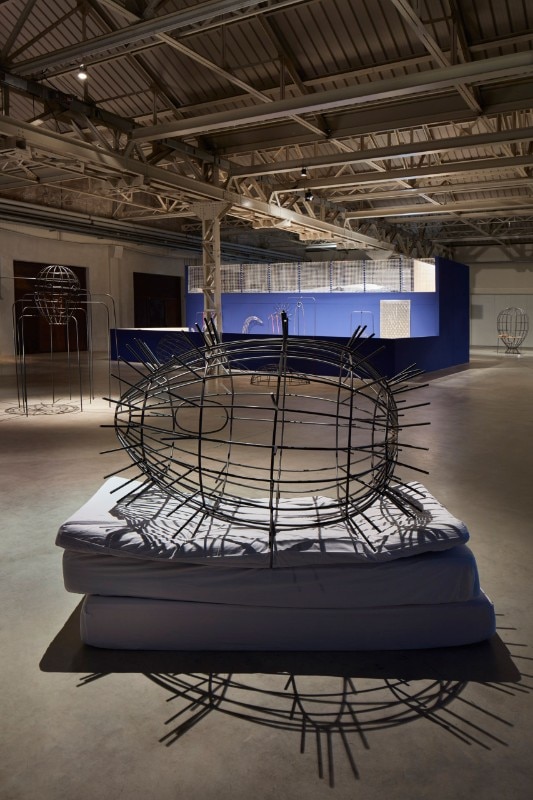
Moving on from a historiographic reflection to a more literally experiential, we come across (in reality at the end of the exhibition) a work which is occasionally activated by an actor who invites visitors to climb onto a podium to have their hair cut, and who, with long scissors in hand, tells stories of news, between one snip and another, provoking in the patron a (very controlled) latent worry for their own safety. The central work, created for this occasion and lending its name to the title of the exhibition is, however, The Dream Machine is Asleep, an oversized bed and chest of drawers which seems to be the only island of freedom in this whirlwind of coercion and control. This is the only place in which the cages we have built around us seem to disappear.
Once we have taken off out shoes and slipped into bed, it is possible to escape the nightmares of reality to abandon ourselves to dreams, but not our own, those of hardened and atrophied adults. By putting on headphones and resting our heads on the pillow, we can listen to the voices of children telling their dreams. Perhaps we can manage to let ourselves go to the point in which we ourselves fall asleep and dream, finally escaping from all of the physical and psychological cages we have built around us, beginning with the composed and attentive composure that we automatically impose upon ourselves when we visit an exhibition.
- Exhibition title:
- Eva Kot’átková The Dream Machine is Asleep
- Curator:
- Roberta Tenconi
- Opening dates:
- until 22 July 2018
- Venue:
- HangarBicocca
- Address:
- via Chiese 2, Milan


